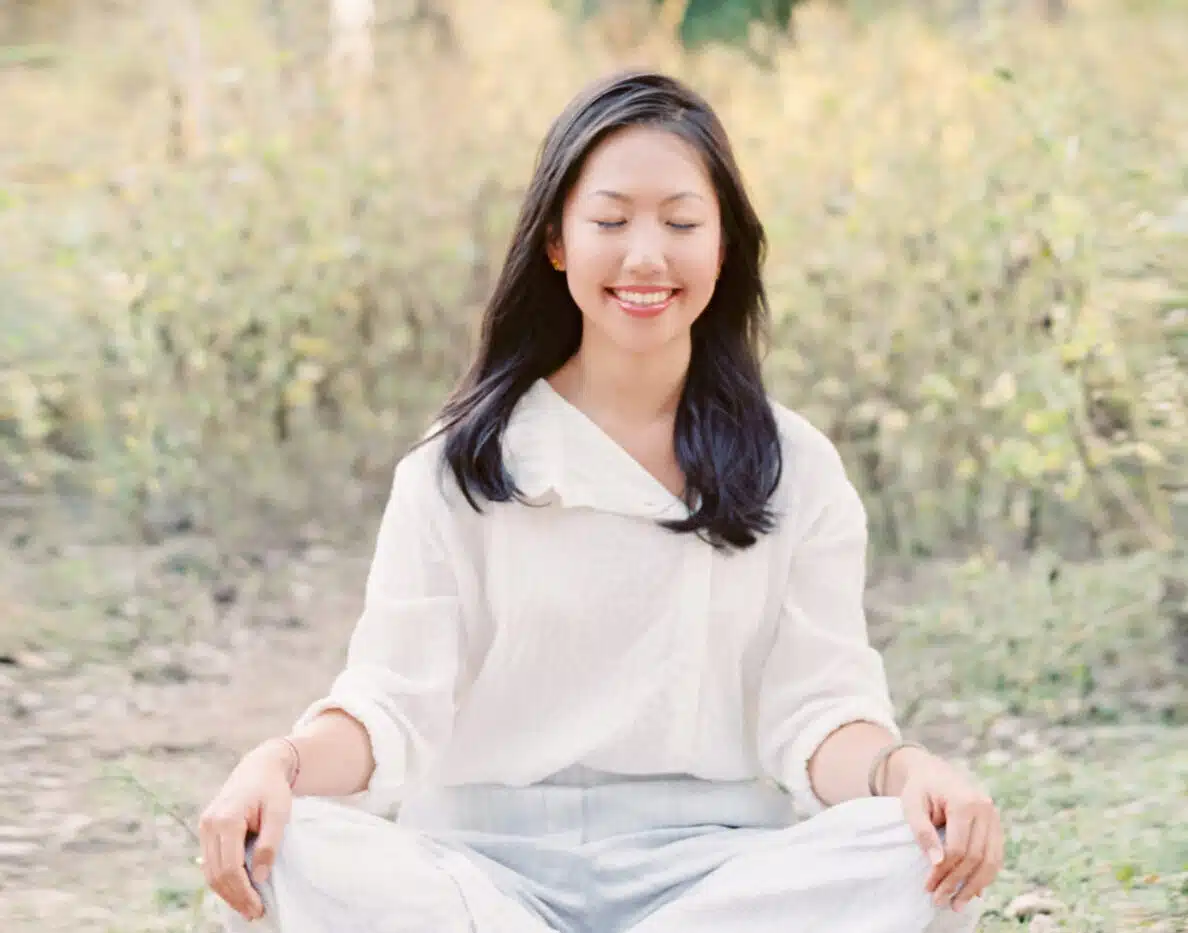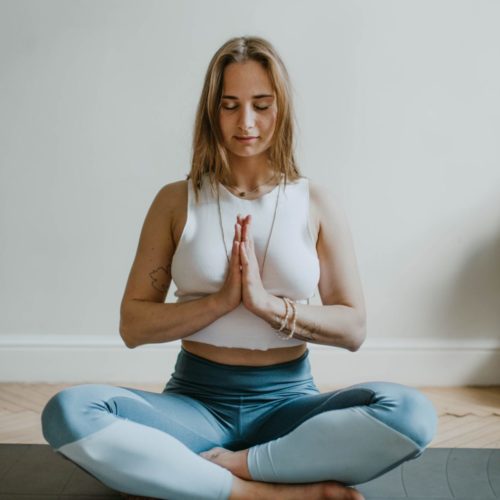Why Do People Meditate?
If you’re hearing the recommendation to meditate from more and more sources, you may be wondering where the trend came from. Why do people meditate, and what can it do for you? Meditation has been practiced for centuries across various cultures, and its benefits are increasingly recognized today for mental health, spirituality, and personal growth. Let’s explore the origins, and impact of meditation.
To have a complete understanding of meditation, it’s best to start from the beginning and track how meditation has changed over time. We’ll discuss how different kinds of people and cultures use meditation , the types of meditation practiced today, and what kind of benefits you can expect from them. Whether you’re interested in meditation for stress relief, mindfulness, or personal development, there is a form of meditation that can work for you.
There are a lot of popular misconceptions about meditation that vastly differ from the original practices. Once you understand where it came from and how it can work for you, you may be more interested in learning a meditation technique for yourself.

Where did meditation come from?
The first records of meditation started with wall art in India. The earliest written records of meditation were found in the Vedas. The Vedas are 5,000-year-old texts from India. They are the texts that all of yoga, Indian philosophy, and Ayurveda also come from. This highlights the deep historical and cultural significance of meditation practices like Vedic Meditation.
Records of practices that seemed close to meditation also arose later in China and may have originally stemmed from the Indian tradition as well. The way the Vedas influenced Chinese and even Jewish early meditation traditions is unclear and debated, but those are the three earliest cultural appearances of meditation, with the Vedas showing the earliest records.
The Sanskrit word for meditation or contemplation is Dhyāna. The root of our term meditation is in the Latin term meditatum, which means ‘to ponder.’ The Latin term came long after the Sanskrit term since Latin originated near modern-day Italy around 2,700 BC. These historical roots form the foundation for modern mindfulness meditation and Vedic meditation practices.
How has it evolved?
Within the Vedic tradition, meditation was one of the many ways to access the state of unity with universal consciousness or to experience one’s individuality at the same time as universality. This state of union between individuality and universality is called yoga.
This may surprise you– yoga is not a practice of poses in spandex. Those poses we associate with yoga in the west are asana, and the physical practice is only one kind of yoga (Hatha yoga). There are over 1,000 kinds of yoga in the Indian tradition, and meditation is another kind.
Over time, other cultures in China, Japan, and near the Mediterranean Sea developed their own forms of meditation that may or may not have been influenced by the Vedic tradition. Practices like mindfulness meditation and mantra-based meditation emerged, each offering unique ways to improve mental health, enhance focus, and promote personal development.

Start your Meditation Journey Today
ATTEND A FREE INTRO TALKThe appearance of meditation in different cultures
The meditation recorded in the Vedas became the foundation of the Hindu culture and religion. After that, other forms of meditation developed in Taoist China and Buddhist India. Japanese Buddhism used meditation next, and then Christian meditation appeared in the 10th-14th century. After that, Islamic forms of meditation appeared, known in Arabic as Dhikir.
In the 18th century, Buddhism spread to the West but remained mainly in intellectual circles. It wasn’t until 1936 that western scientific research began on meditation. Then, in the 1950s, Vipassana started in Burma and Maharishi Mahesh Yogi began teaching the mantra-based meditation practice that we teach in Vedic Meditation. These diverse practices show the evolution of meditation as a tool for spirituality, mindfulness, and stress relief. Read about the benefits of group meditation.
Since then, meditation has been popularized as a result of scientific research, psychological programs on mindfulness, and several thought leaders or meditation gurus became popular in America. It wasn’t until the 2000s that meditation began to be used clinically to improve patient outcomes and became a cornerstone for mental health practices.

Meditation as a religious practice
All five major religions practice some form of meditation. Hinduism came from Veda, and then Buddhism developed meditation styles centered on concentration and discipline.
Judaism and Christianity connotate meditation as reflecting or pondering on truths in the Torah or in the Bible. And Islamic meditation focuses on remembering or reflecting on God. Each of the religions with meditation uses the practice in its own unique way. This diversity has laid the groundwork for meditation’s widespread appeal and adaptation into non-religious contexts like mindfulness meditation and Vedic meditation.
Who practices meditation now?
Now, meditation has developed beyond its original religious usage and has many non-religious uses. Mindfulness meditation and Vedic Meditation came from the Vedic tradition, but do not have religious connotations. Many kinds of westernized meditation are intended for mental health or focus and do not prescribe any kind of prayer or religious discipline.
That means that all kinds of people meditate now, from deeply religious Hindus, Buddhists, Jews, Christians, and Muslims, to non-religious people from all kinds of ethnicities and backgrounds. Between 200-500 million people meditate worldwide. Whether for stress relief, mental health, or personal development, meditation has become a global phenomenon.
Why do people meditate?
Having a consistent meditation practice requires a person to rearrange their schedule and make time to sit quietly. Some people have a hard time with concentration-based meditation and find that they can’t force their thoughts to stop (which is actually very normal and expected). Though Vedic Meditation allows thoughts to come and go, many forms require immense focus and concentration and can be quite challenging.
So why do people meditate?
As a result of the extensive research on meditation, more and more people have adopted some form of meditation practice for many different reasons. We’ll cover the main reasons why people meditate next.

Meditation and spirituality
Beyond its uses in religions around the world, many people meditate to create spiritual experiences. They may feel it connects them to a sense of unity and peace, or that it helps them commune with a higher power. Sitting quietly naturally instigates self-reflection, as the meditator tends to notice how they are thinking and feeling. This turning inward to observe one’s own thoughts and experiences can be a spiritual experience of its own.
However, what one person would call spiritual, another person may say is peaceful or simply a mental health practice. Everyone defines spirituality differently, and there are many people who meditate and don’t necessarily believe they have a spirit at all.
Regardless of how spirituality is defined, meditation offers profound benefits to the mind and body, making a consistent practice desirable.
Meditation for mental health
Research has shown that meditation can aid mental health issues like anxiety, stress, depression, and PTSD. Even for those who do not experience mental illness, many find meditation helps them to feel calm and downregulate their mind and nervous system out of fight-or-flight mode. Many rely on mindfulness meditation or Vedic meditation to help them learn to focus or ‘tame their monkey mind’ more effectively.
Vedic Meditators often notice that they don’t react to changes in expectation in the same way. They feel that their stress resilience improves, and they are less prone to reactions of fear, anger, sadness, or irritation when something unexpected happens. Many Vedic meditators say their relationships or work performance improves, and they are better able to sense others’ feelings and needs.
Meditation for personal development
For those who are interested in developing their character, awareness, empathy, or strength in the face of challenges, meditation is an essential tool. Meditation has been proven to increase employee performance and improve creativity.
Vedic Meditators often share that they feel their consciousness expanding over time as they are consistent with their practice. This means that they feel more aware of the subtleties in their own experience and inner world, while at the same time they feel more in tune with their surroundings and the evolution of their lives.
Vedic Meditators often share that over time they can either see certain things coming— they can easily and accurately sense how others will act or how a situation will change– or that they can respond to unexpected changes easily and without much effect on their state.

Meditation for sleep
Many studies have shown that meditation assists with insomnia and improves the quality of sleep. Vedic Meditators often share that their sleep has improved within the first week of receiving their mantra and learning to meditate.
Vedic Meditation allows the body to rest more deeply than sleep because it does not require concentration or forcing certain thoughts in any way and instead relies on a special kind of mantra to slowly and effortlessly take the mind beyond thought. This connection between meditation and better sleep is one of its most immediate and tangible benefits.
You might think that thinking during meditation means that your body doesn’t rest at all, but with Vedic Meditation, the thoughts that come up are actually stress leaving the body. This means that both thought-filled meditations and ‘deep’ meditations with a prolonged experience of transcendence are both good quality meditations.
Once the body has released the stress of the day through two twenty-minute Vedic Meditation sessions, it is able to sleep deeply and easily restore itself overnight.
Meditation as social good
Many people who begin to meditate increasingly notice what doesn’t work in our world. Whether it’s the way we treat our planet and nature, or the way we treat each other, the sense of disharmony in the outside world calls many meditators to want to do something. So, what can meditation do for the world?
According to the first teacher of the mantra-based practice we use in Vedic Meditation, Maharishi Mahesh Yogi, “To end the wars of the world, we first have to end the wars in our homes and in our hearts.” Many meditators hope to develop their own consciousness to become the best contribution to the world that they can be. Expanding our consciousness and creating more peace and calm through meditation is something each of us can do to inch the world closer to global peace and greater unity.
Conclusion
If any of these benefits appeal to you, the best thing you can do is to learn to meditate with a qualified instructor. To find out more about the Learn to Meditate course and get acquainted with your instructor, schedule an Intro Talk here. You’ll be able to learn more about Vedic Meditation and see what benefits it can bring to your life. Start your meditation journey today with a free intro talk.






